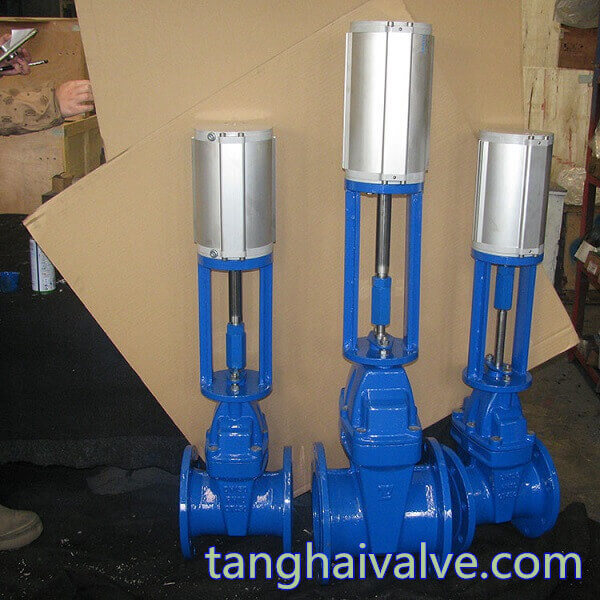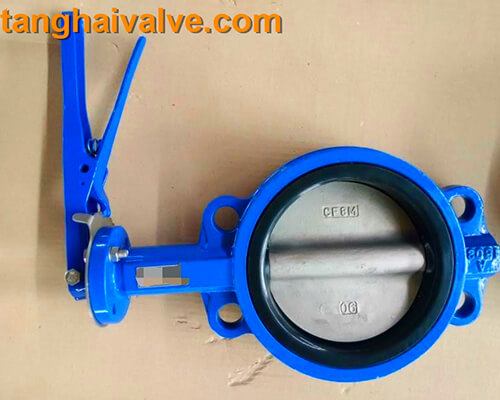Requirements of various sealing materials for pneumatic gate valves
This article would like to discuss with you some of the material requirements of pneumatic gate valves, including the

pneumatic gate valve (3)
material of the valve body, stem, stem bushing, nut, sealing surface and packing of the pneumatic gate valve. Each of them is an important component to ensure the good sealing performance of the valve. The quality of the sealing is the main criterion for evaluating the quality of the valve. Let’s share the standard requirements of various materials for pneumatic valves.
Let’s take a look at the valve body, valve stem, nut and other requirements. The material of the valve body should be mainly ductile iron, and the grade and actual physical and chemical test data of the cast iron should be indicated. The stem material strives to be stainless steel, and large-diameter gate valves should also be stainless steel embedded valve stems. The material of the stem bushing should not be greater in hardness and strength than the stem, and will not form electrochemical corrosion with the stem and valve body under water immersion. The nut material is made of cast lead brass or cast aluminum bronze, and the hardness and strength should be greater than that of the valve stem.
Let’s look at the material of the sealing surface of the pneumatic gate valve. We know that different types of pneumatic valves will require different sealing methods and materials because they are applicable to different working conditions. The sealing material is mainly divided into soft seal and hard seal. The soft seal is mainly an elastic seal based on rubber and plastic, and the hard seal is a rigid metal-to-metal seal. Take the ordinary wedge-type soft-seal gate valve as an example. The manufacturer’s fixing method, grinding method, physical chemistry and sanitary inspection data of the valve plate lining material should be clearly explained. And mark the valve body, the sealing surface material and the valve plate sealing surface material. Their physical and chemical testing data, especially the hygienic requirements, anti-aging performance, and wear resistance of rubber. Take the rubber soft sealing gate valve as an example, usually use nitrile butadiene rubber and EPDM rubber, etc. It is strictly forbidden to mix with reclaimed rubber.
Finally, the valve shaft packing has a great relationship with the sealing performance of the gate valve. Many leaks are caused by improper use of fillers. Since the pneumatic valves in the pipe network are usually opened and closed infrequently, the packing is required to be inactive for several years, the packing does not age, and the sealing effect is maintained for a long time. Therefore, the packing cannot be too tight or too loose. The valve shaft packing should also have a good sealing effect when it is subjected to frequent opening and closing. If the packing needs to be replaced, the pneumatic valve design should consider measures that can be replaced under water pressure. Therefore, the valve shaft packing is not to be replaced or not replaced for more than ten years.
TH Valve is a professional manufacturer of butterfly valve, gate valve, check valve, globe valve, knife gate valve, ball valve with API, JIS, DIN standard, used in Oil, Gas, Marine industry, Water supply and drainage, fire fighting, shipbuilding, water treatment and other systems, with Nominal Diameter of DN50 to DN1200, NBR/EPDM/VITON, Certificates & Approvals: DNV-GL, Lloyds, DNV, BV, API, ABS, CCS. Standards: EN 593, API609, API6D
Related news/knowledge:
Selection and application of eccentric butterfly valve
Valve material and valve standards-(5)-packing material
The structure and characteristics of bellows gate valve
Fasteners, fillers and gasket materials of valves




 © Copyright 2020 Tianjin Tanghaidongyang Valve Co., Ltd. All Rights Reserved.
© Copyright 2020 Tianjin Tanghaidongyang Valve Co., Ltd. All Rights Reserved.